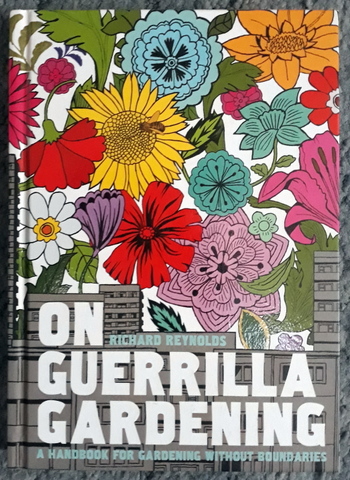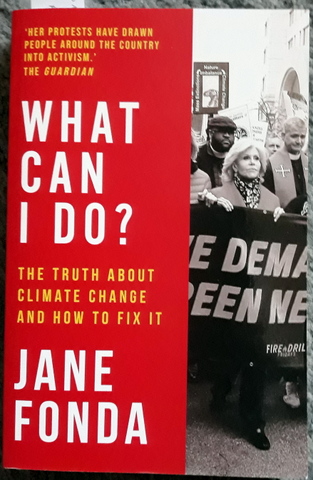Rise and Resist (How to Change the world) – Clare Press – Melbourne University Press (AUS) 2018 ISBN 978 0 522 87373 3 – This is the book that got me off my fat backside and thinking about activism. The book is like a series of essays on various aspects of activism including different ways to become an activist, the ‘me too’ movement and how it started and became so effective as well as the rise of the climate movement. Other chapters cover activism using craft (knitting Nannas), building a tiny house and the anti-plastic and zero waste movements. A great book which is easy to read and full of information.
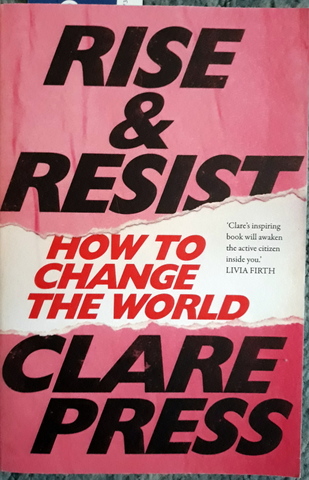
No One is Too Small to Make a Difference – Greta Thunberg – Penguin/Random House (UK) 2018 ISBN 978 0 141 99174 0 – This is a very small book, physically, and very hard to read. It is quite upsetting. It is basically a collection of eleven of Greta Thunbergs’ early speeches including ‘Our lives are in your hands’, ‘Our house is on fire’ and ‘together we are making a difference’. A small book but a powerful one!
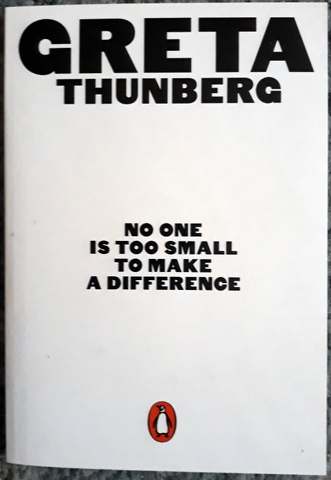
Civic Revolution (A Citizens Guide) – Ric Casale – Matador (UK) 2019 ISBN 978 1 78901 860 8 – This book is about starting a revolution in our cities to move us away from the environmental disaster towards which we are heading. It covers why globalism isn’t working and takes on ‘untamed growth’, the book talks about how we need to change direction and stimulate the community to work towards a better future and live better, less consumptive and wasteful lives. There is a lot in this book which is difficult to summarise in a paragraph!
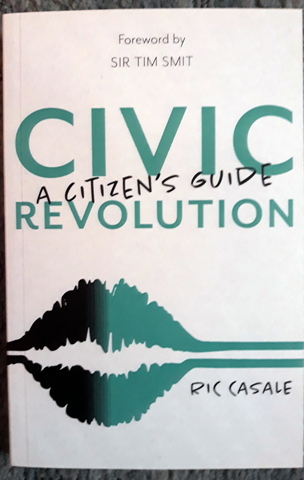
The Food Activist Handbook – Ali Berlow - Storey Publishing (US) 2015 ISBN 978 1 61212 180 2 – The book is pretty US-centric and some stuff won’t work in Aus (for example there is a large section on school cafeterias) but there is still a lot of stuff that applies. It is very much an action oriented book. Right at the start is a list of the actions more fully explored as the book goes on. Various actions are covered in each section under the heading ‘You Can Do This’. Topics covered (also with action oriented titles) include: Start; Educate; Build; Grow; Connect; Speak; Harvest; Feed; Cook and Engage. You can just pick something and start!
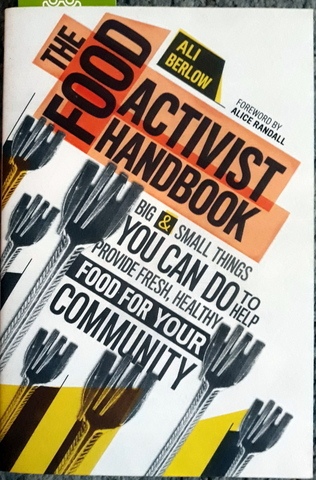
Counter Power: Making Change Happen – Tim Gee – New Internationalist Publications (UK) 2011 ISBN 978 1 78026 032 7 – This book is the result of the authors’ researches in the ‘Working Class Movement Library’ in Salford near Manchester UK. His researches lead him to believe that successful protests and movement had a common thread which he calls counterpower. The book is designed to develop the concept of counterpower, looking at the different types of counter power (eg Idea, Economic and Physical counterpower). The book looks in general how counterpower helps movements win and then proceeds to examine in detail various past movements including India winning independence, the antiapartheid movement and the Vietnam War.
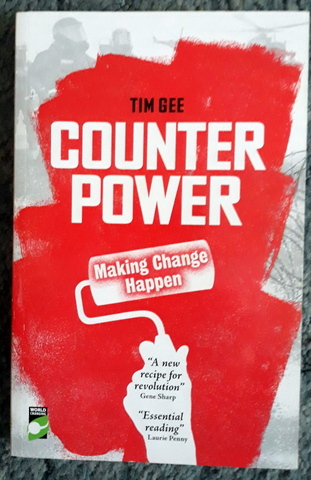
Against Doom (A Climate Insurgency Manual) – Jeremy Brecher – PM Press (US) 2017 ISBN 78 1 62963 385 5 – Also a very US-centric book, it is divided into 2 parts – part 1 being the first 5th of the book and covering the global climate insurgency, part two (the next 4/5ths of the book) covering the climate insurgency in America. There are parts of the book which can be applied elsewhere. The book discusses strategy; imposing fossil freeze and climate action plans; working with the public; undermining the pillars of support for climate destruction and concludes with two brief scenarios: Doom or Fossil free.
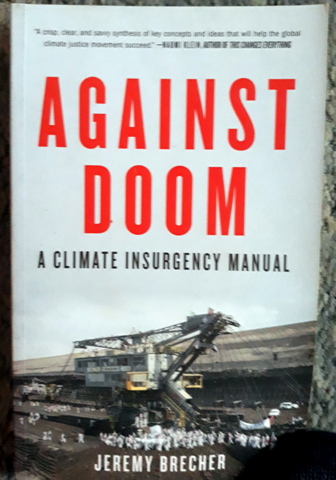
Working the System – Beverly Duffy - Public Interest Advocacy Centre (AUS) 2003 ISBN 0 9586694 5 7 – This book was written to ‘equip individuals and communities with the knowledge and skills necessary to participate in and influence decision making at all levels of government’. Section 1 covers how advocacy works and can be used to achieve outcomes as well as a general introduction on how government works in Australia. Section 2 covers the parliament, how it works and how the public can influence it, section 3 covers the government and public service, consultation, challenging government decisions, complaints bodies and consumer participation in market regulation. Section 4 gives an overview of the legal system public interest litigation. There do not seem to be any updated editions of this book that I can find, and I don’t know how out of date (being published in 2003) it is.
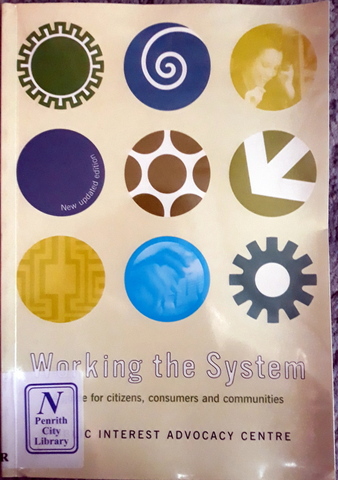
Climate Action (A Campaign Manual for Greenhouse Solutions) – Mark Diesendorf – UNSW Press (AUS) 2019 ISBN 978 1 74223 018 4 – The book starts out with a review of the threats and solutions to the greenhouse gas problem and why it is an urgent problem, the fallacies of what the author calls the ‘greenhouse mafia’ and their fallacies about the solutions to global warming. He then moves on to the technologies available for stopping global warming. This is followed by an detailed review of the government policies needed to achieve a practical and just transition, and discussion of the strategies for defeating the ‘greenhouse mafia’. The book finishes off with how to put a winning anti-greenhouse gas campaign together.

This is Not a Drill – Extinction Rebellion – Penguin Books (UK) 2019 ISBN 978 0 141 99144 3 – This book is a series of essays by various authors from scientists to everyday people like a firefighter from California. The book is in two parts – the first part reviews the problem, the second part examines the actions which need to be taken including building a movement and civil resistance, feeding the movement and even getting arrested and going to gaol. The last part of part two discusses politics, economics, a green new deal and the zero carbon city. ‘The time is now’.
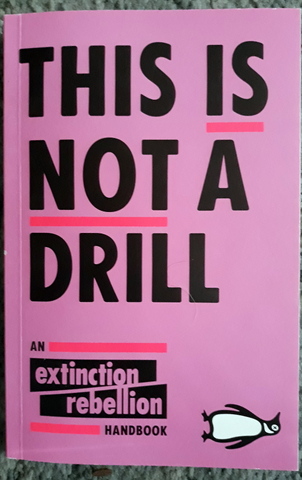
Grocery Story (The Promise of Coops in the Age of Giants) – Jon Steinman – New Society Publishers (CAN) 2019 ISBN 978 0 86571 907 1 – While this book is very ‘North America’ centric, the lessons of having only a small number of food suppliers to choose from and the negative effects on food suppliers and ‘eaters’ (ie us!). The book moves on to description of the food cooperative (coop), its history through to now, how it can answer the problems caused by ‘Moles’ and ‘Bullies’. The shortcomings of the coop model and how to avoid them is also covered. As mentioned previously, the data is all north American but it look eerily familiar and the book is mostly applicable to the Aus experience.
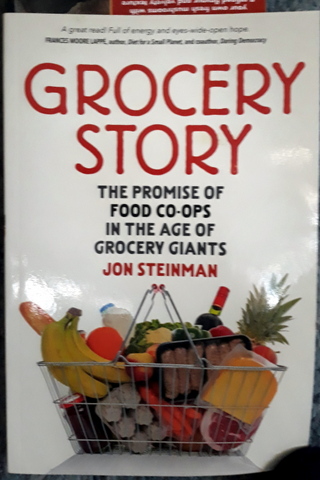
How to Save Your Neighbourhood, City or Town – Maritza Pick – Sierra Club Books (US) 1993 ISBN 0 87156 522 6 – The book is divided into two parts. The first part covers organising the community to solve environmental problems including how to begin, leadership and teamwork, generating a newsletter, pitfalls and rewards of political organising and the public hearing process (US only). The second part covers how to win environmental campaigns and elect environmentalists to public office which talks about the campaign committee, fundraising, the media, volunteers and the end point: victory or defeat.
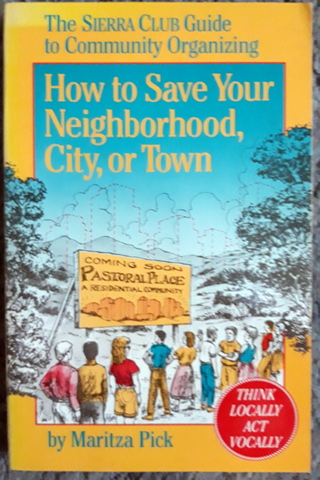
On Guerrilla Gardening (a Handbook for Gardening without Boundaries) – Richard Reynolds – Bloomsbury (UK) 2008 ISBN 978 0 7475 9081 1 – This is certainly a book about direct action! It is also divided into two parts (seems to be a thing, who knew?). The first part, entitled ‘the movement’ and talks about the why of guerrilla gardening, and what guerrilla gardeners are try to achieve as we as the history of how things got started. The second part ‘the manual’ discusses the plants to use, techniques (including seed bombs), sourcing plants, organising people, communications, pest (of the human variety) and how to deal with them, propaganda and some case studies.
